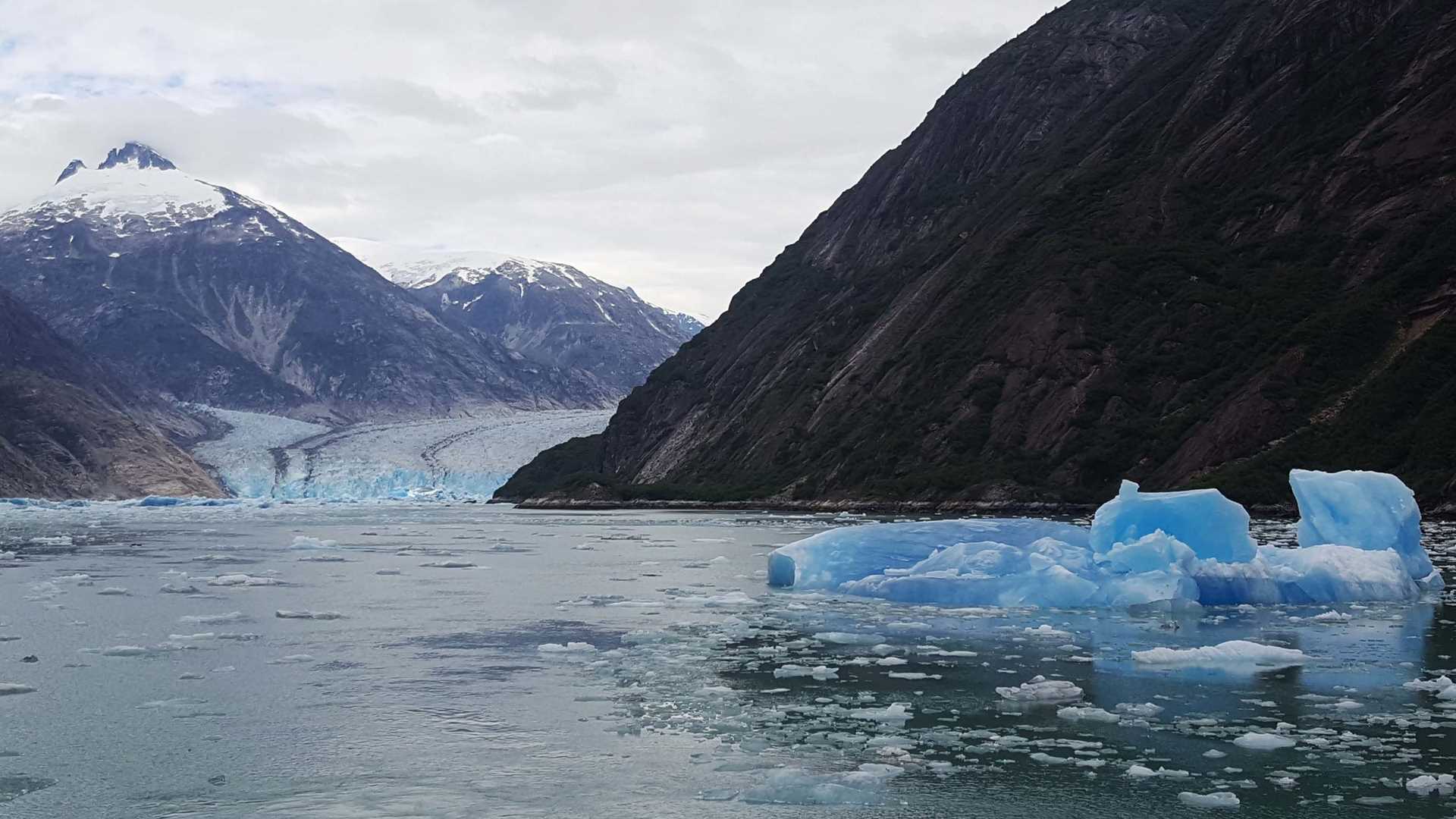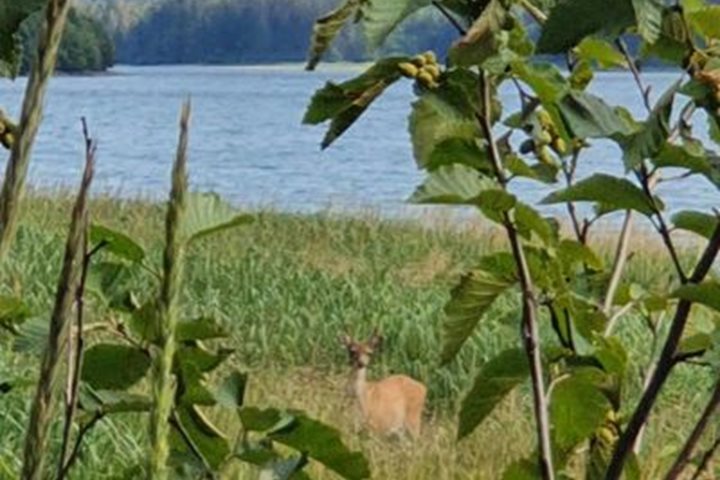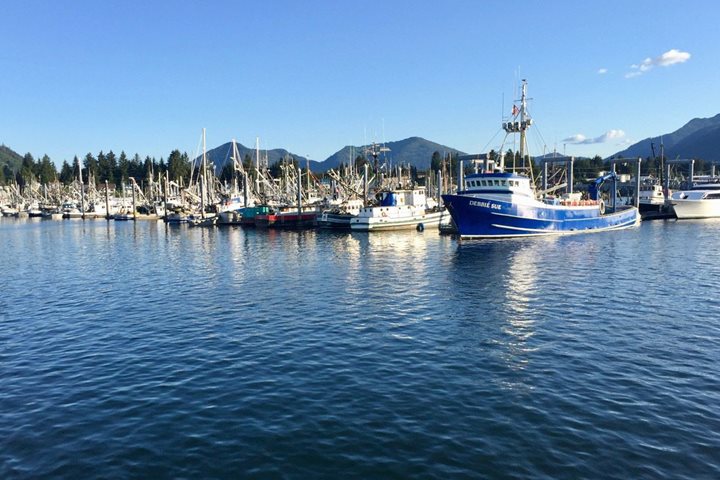The guests aboard the National Geographic Sea Lion caught a glimpse of an amazing, trip-making scene—all before breakfast. We saw a humpback whale swimming by icebergs, a glacier in the background. We watched its breath when the whale surfaced and saw its gorgeous fluke when it dove out of sight.
We spent the rest of the overcast day in Endicott Arm Fjord, one of the most beautiful places in Alaska. We stared up at the 1,000-foot-high granite cliffs soaring out of the turquoise-colored water. There were a dozen or so hanging valleys with tall waterfalls flowing from each one. We saw several cliffs marked with horizontal striations carved by the glacier that formed this fjord during the last ice age. There was abundant bird life—glaucous-winged gulls and Arctic terns flew overhead.
But what surprised us most was finding orcas in this fjord. We spent an hour watching them swim and dive, and we learned that this pod of four was a matriarchal family group.
We spent the rest of the day in the narrow, upper end of the fjord. Blue icebergs came in every shape and size—the largest were the size of a ship. It’s amazing that 90 percent of an iceberg’s mass sits below the water. We learned that the incredible blue color is the result of water molecules absorbing the light at the red end of the color spectrum.
Toward the end of the day, it was a special treat to take Zodiac boat rides toward the face of the Dawes Glacier. On the way there, we saw dozens of harbor seals, in the water and on the icebergs, and cruised by waterfalls and hundreds of blue icebergs.
We brought small icebergs back to the ship to analyze the marble-sized ice crystals. One iceberg was put on display in the lounge as part of a contest to guess when it would completely melt.









